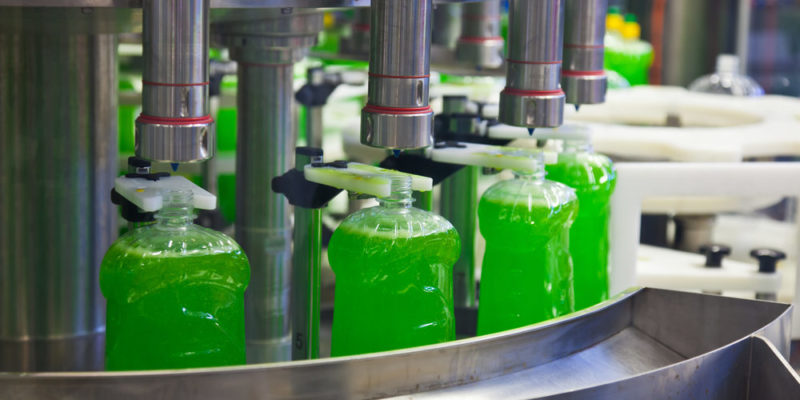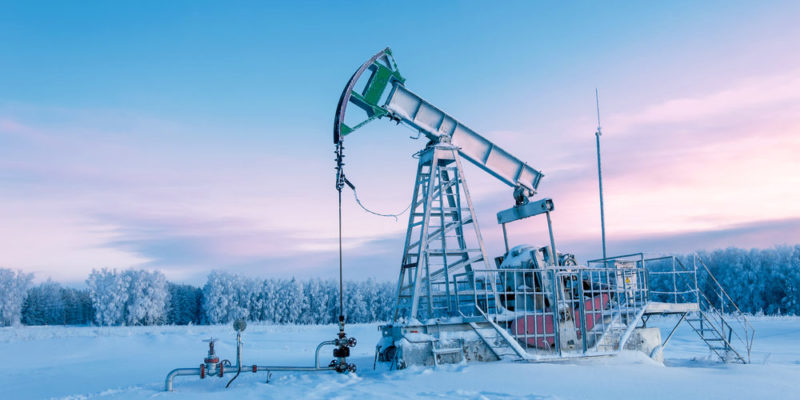We explain what petroleum oil is, how it originated, the types there are and their properties. Also, what are its characteristics and various uses.
What is petroleum oil?
Petroleum (from the Latin petra , "stone", and oleum , "oil") is a bituminous substance, dark in color and viscous texture . It is composed of a mixture of organic hydrocarbons insoluble in water . It is a non-renewable natural resource of gigantic economic value.
Although petroleum oil has been known since ancient times , it was only with the Industrial Revolution of the 18th century that the scope of its capabilities was understood. It began to be valued as a raw material and source of energy and it began to be called black or crude gold .
Today it is used as a source of obtaining complex materials (derivatives) or fossil fuels such as gasoline. Many countries subsist on the exploitation of this resource and international petroleum oil prices are a source of stability or conflict in many regions of the planet .
On the other hand, petroleum oil and its derivatives have a very high environmental impact . Extraction, the burning of fossil fuels, the mass production of plastics and petroleum oil spills are the dark side of this material .
This "collateral damage" has a negative impact on life on the planet and on the stability of the climate . They lead to the destruction of ecosystems and an increase in greenhouse gases . It has been proven that it causes the acceleration of global warming , that is, climate change.
Origin of petroleum oil

The origin of this substance is unknown for sure, but there are two theories about it .
One theory considers it a hydrocarbon of fossil origin , that is, the product of the millenary accumulation of large amounts of organic matter. This matter can come from zooplankton and algae , belonging to ancient desiccated lake regions. Over the centuries, the anoxic bottoms (without oxygen ) of these dried up lakes and rivers were covered by layers of sediment.
Thus, the pressure and heat conditions were generated that in theory unleashed the chemical and physical transformation processes. Due to this natural cracking the organic matter was converted into new substances: bitumen, natural gases and oil.
The other theory about its origin considers that it comes from abiogenetic sources , that is, not from organic matter. This position has the support of only the minority of scholars on the subject, since it does not explain many of the contents of petroleum oil, which is clearly organic in nature.
Petroleum Oil composition
Petroleum Oil, as we have said, is a highly varied mixture of hydrocarbons, which includes the following:
- Paraffins (saturated hydrocarbons).
- Oleifins (ethylenic hydrocarbons).
- Acetylenic hydrocarbons.
- Cyclic or cyclonic hydrocarbons.
- Benzene or aromatic hydrocarbons.
- Oxygenated compounds (by oxidation and polymerization).
- Sulfur compounds.
- Cyclic nitrogen compounds.
- Dissolved content of nitrogen , sulfur , oxygen, cholesterol, porphyrins and traces of nickel, vanadium, cobalt and molybdenum.
Types of petroleum oil

The following types of oil are distinguished, based on their API gravity (scale created by the American Petroleoum Institute), that is, their density:
- Light or light ecru. It presents gravities above 31.1 ° API.
- Medium or medium crude. It ranges between 22.3 and 31.1 ° API.
- Heavy oil. It presents gravities between 10 and 22.3 ° API.
- Extra heavy crude. It has gravities less than 10 ° API.
Petroleum Oil properties
Petroleum Oil is one liquid , viscous, dense color tending to black or yellow (by hydrocarbon concentration). Its unpleasant odor is due to its sulfate and nitrogenous content.Its enormous caloric power reaches 11,000 kilocalories per kilogram . These properties will vary according to the type of oil.
What is petroleum oil used for?
 It is a powerful source of industrial materials . It is essential in the manufacture of solvents, fuels, fuels, alcohols and plastics. Entire industries rely on oil and its chemical properties.
It is a powerful source of industrial materials . It is essential in the manufacture of solvents, fuels, fuels, alcohols and plastics. Entire industries rely on oil and its chemical properties.To achieve these products, crude is subjected to various refining and distillation processes , such as fractional distillation. Thanks to these processes it is possible to separate and extract its different ingredients.
The petrochemical and refining industry takes care of this, offering raw materials to various secondary industries : pharmaceuticals, automotive, manufacturing, gas, detergents, lubricants, etc.
In addition, it is the main ingredient in fuels , which support various types of human transport on land , air and sea . Petroleum Oil is one of the most useful substances discovered by man .
Petroleum derivatives
 Progressively heated from 20 ° C to 400 ° C in temperature , the oil separates into phases, useful to obtain various derivative substances:
Progressively heated from 20 ° C to 400 ° C in temperature , the oil separates into phases, useful to obtain various derivative substances:
- Natural gas (20 ° C). Fuel hydrocarbon gases such as ethane, propane, and butane (so-called "liquefied petroleum gases"), which are used for cooking or heating.
- Naphtha or ligroin (150 ° C). Also called benzine or petroleum ether, it is a mixture of highly flammable and volatile compounds, used as a nonpolar solvent and as a base to make other organic compounds.
- Gasoline (200 ° C). The most popular fuel for internal combustion engines, such as those in motor vehicles, which varies in rank according to its octane number or purity.
- Kerosene (300 ° C). Kerosene is a low-purity, low-performance fuel, but much cheaper and easier to obtain than gasoline, since it does not require as many subsequent interventions. It is used as a solvent, a base for pesticides and for lighting (lamps) or cooking (rural kitchens).
- Diesel (370 ° C). Also called diesel, it is a fuel made almost entirely of paraffin. It is ideal for heaters and outboard motors (or diesel engines), which are cheaper but with much lower performance.
- Fuel oil (400 ° C). The heaviest fuel that can be derived at atmospheric pressure from oil. It is used to feed boilers, furnaces and also as a distillation material, in obtaining asphalt, lubricating oils, etc.
How is petroleum oil extracted?
 Petroleum Oil is massively extracted from its formation sites underground . For this, facilities known as wells are used, which are located on the oil fields. In general, these fields are located in places close to those of natural gas.
Petroleum Oil is massively extracted from its formation sites underground . For this, facilities known as wells are used, which are located on the oil fields. In general, these fields are located in places close to those of natural gas.Oil deposits are found in the lower layers of the earth's crust . From there, the liquid can be extracted using various techniques, according to the nature of the soil and the geographical arrangement, which can be on land or on the seabed or rivers, lakes, etc.
The form of extraction also depends on the type of crude , since some are heavier than others (see point 3).
World's leading exporters
The extraction and commercialization of oil is an economic activity of great importance in various countries:
- In Africa . Algeria, Angola, Gabon, Equatorial Guinea, Libya, and Nigeria.
- In the Middle East . Saudi Arabia, United Arab Emirates, Iraq, Kuwait and Qatar.
- In Europe . the Nordic countries such as Norway, Denmark and the United Kingdom , as well as in Russia, Romania, Serbia, Ukraine, Poland, Bulgaria, Croatia and Georgia.
- In Oceania . Australia and New Zealand.
- In America . The United States, Canada, Mexico , Argentina , Brazil , Guyana, Suriname, and especially Ecuador and Venezuela , the latter with the largest proven world reserves.
Oil spills
 Oil spills are a true ecological tragedy . They are known as "oil slicks" and affect the entire ecosystem where they occur. They catastrophically damage fauna and flora, as well as the economic activities that depend on them (fishing, tourism , etc.).
Oil spills are a true ecological tragedy . They are known as "oil slicks" and affect the entire ecosystem where they occur. They catastrophically damage fauna and flora, as well as the economic activities that depend on them (fishing, tourism , etc.).Its effects can be quite long-lasting and its compounds can pass into the body of animals , entering the food chain . In addition, they can obstruct the photosynthesis of plants , deteriorating animal life by contact or preventing species from behaving in an ordinary way.
OPEC / OPEC
 The Organization of the Petroleum Exporting Countries (OPEC or OPEC for its acronym in English) was founded in 1960 and currently has its headquarters in Vienna, Austria . It is an international organization that ensures the understanding of countries that depend heavily on the oil market.
The Organization of the Petroleum Exporting Countries (OPEC or OPEC for its acronym in English) was founded in 1960 and currently has its headquarters in Vienna, Austria . It is an international organization that ensures the understanding of countries that depend heavily on the oil market.Its objective is to achieve joint action in favor of the stability of oil prices . The danger of a fluctuating market is that it causes inequities, poverty and economic crisis not only in the countries that comprise it, but in the rest of the planet.
Currently fourteen countries are members of OPEC : Angola, Saudi Arabia, Algeria, Qatar, Ecuador, United Arab Emirates, Gabon, Equatorial Guinea, Iran, Iraq, Kuwait, Libya, Nigeria and Venezuela.
The above content published at Collaborative Research Group is for informational and educational purposes only and has been developed by referring reliable sources and recommendations from experts. We do not have any contact with official entities nor do we intend to replace the information that they emit.
Abubakr Conner brings a diverse skill set to our team, and covers everything from analysis to the culture of food and drink. He Believes: "Education is the most powerful weapon that exists to change the world." .
Leave a reply
Your email address will not be published. Required fields are marked *Recent post

Sport: What Is It, Types, Risks, Features, Characteristics and Examples

Dogs: Emergence, Features, Characteristics, Feeding and Breeds

Story: Definition, Elements, Structure, Features and Characteristics

